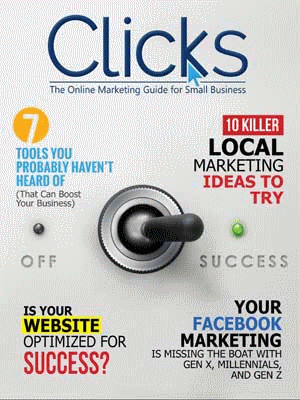How much value are your customers getting from your products or services?
If you don’t know the answer to that question, you might be putting your customer retention at risk. And, considering that it can cost up to 10 times as much to win a new customer as it does to retain an existing one, ignoring customer retention is – simply put – a bad idea.
Of course, the key question here is understanding how your product affects your customers. One of the best ways to do that is to track customer success metrics. Here are 6 you should be paying attention to.

#1: Qualitative Customer Feedback
It would be impossible to know what your customers think of your company without asking them – so the first thing you should do is talk to your customers about their experiences with your business and products.
There are multiple ways to solicit qualitative customer feedback. The quickest and easiest method is to create a customer experience questionnaire and email it to your list. You can also post it on your social media pages. Use the responses to measure customer satisfaction.
An alternative and more labor-intensive option is to have your sales reps ask customers one-on-one about their experiences. For example, you could host a customer appreciation day, ask questions, and use the answers to measure your results.

#2: Customer Churn Rate
Knowing how many customers you lose in any given period is another key measure you should track. The customer churn rate is a measure of how many customers “churn” or leave your company.
You can calculate your churn rate by counting your clients or customers at the beginning of a month. Then, count the number of customers who churn during that period and divide it by your starting number.
You should not include any new customers unless they churn in the same period they became customers. In other words, if a customer bought your product at the beginning of January, wasn’t satisfied, and vowed never to buy it again, you should count them in both your starting figure and your churn figure. However, new clients that stay on should not be counted until the next period.

#3: Monthly Recurring Revenue
Your monthly recurring revenue is a measure of how much money you are making from your existing customer base. It can be a good way to track customer success, particularly for companies whose clients buy products on an ongoing basis.
To calculate your monthly recurring revenue or MRR, start by calculating your average revenue per customers (Divide your total revenue from customers by the number of customers you have.) Then, simply multiply your total number of active customers by your average revenue per customer.
For this calculation, it’s important to differentiate between active customers and inactive customers. Recurring revenue is revenue you can count on. A client who orders only once a year may be counted, but for monthly recurring revenue, you should either divide their revenue by 12 if you want to include it every month, or add the total only to the month when they normally buy from you.

#4: Customer Health Score
- How many customers or clients do they have?
- Is the customer hiring new employees?
- Are they taking on more business – additional orders or clients?
- Have their customer retention rates improved?
Once you have answers to these questions, you can create a scoring system. For example, you might score each question on a scale from one to 10 and add the scores together to get a total. Then, you should plan to follow up and recalculate on a regular basis.

#5: Customer Satisfaction
Customer satisfaction (CSAT) scores are something that’s always worth tracking. While they might not be related directly to your customer’s success, they are an important measure of your product’s worth and usefulness to a customer.
For example, a low CSAT score is likely to indicate that your product or service is underperforming for your customers. It could mean that your Customer Service team isn’t performing as well as it should. A high CSAT score likely means that your customer is satisfied and will continue buying from you. It may also increase the chances that they’ll recommend your business to other customers.
Whatever the reason for the score, tracking it gives you an opportunity to intervene, provide the value your customers need, and increase the chances that they’ll stick with your company in the long haul. Improving customer satisfaction is linked directly to improvements in customer retention and our next metric, as well.

#6: Customer Lifetime Value
The final metric you should track is a big one. Customer lifetime value, or CLV, is a measurement of how much an individual customer is worth to your company over time. It’s directly related to some of the other metrics we’ve discussed, including customer retention, CSAT scores, and customer health.
To calculate the CLV, you’ll need three pieces of data. They are:
- Your average purchase value (total purchase revenue divided by total number of purchases)
- Your average purchase frequency (for example, twice a month)
- Your average customer lifespan (for example, three years)
So, if you had an average purchase value of $100, an average purchase frequency of twice a month, and an average lifespan of three years, your CLV calculation would be:
$100 X 2 X 36, for a total lifetime value of $7.200.
Your CLV is a useful metric when you determine your marketing budget. It wouldn’t make sense to spend $1000 acquiring a new customer if your CLV is only $1,200. You’ll need to crunch the numbers to back into a customer acquisition and retention budget that makes sense.
While there are many factors that can influence your customers’ success, you should always have a handle on how your product is helping them. The 6 metrics here are ones that you can’t afford to ignore. After all, your success may depend on it.



